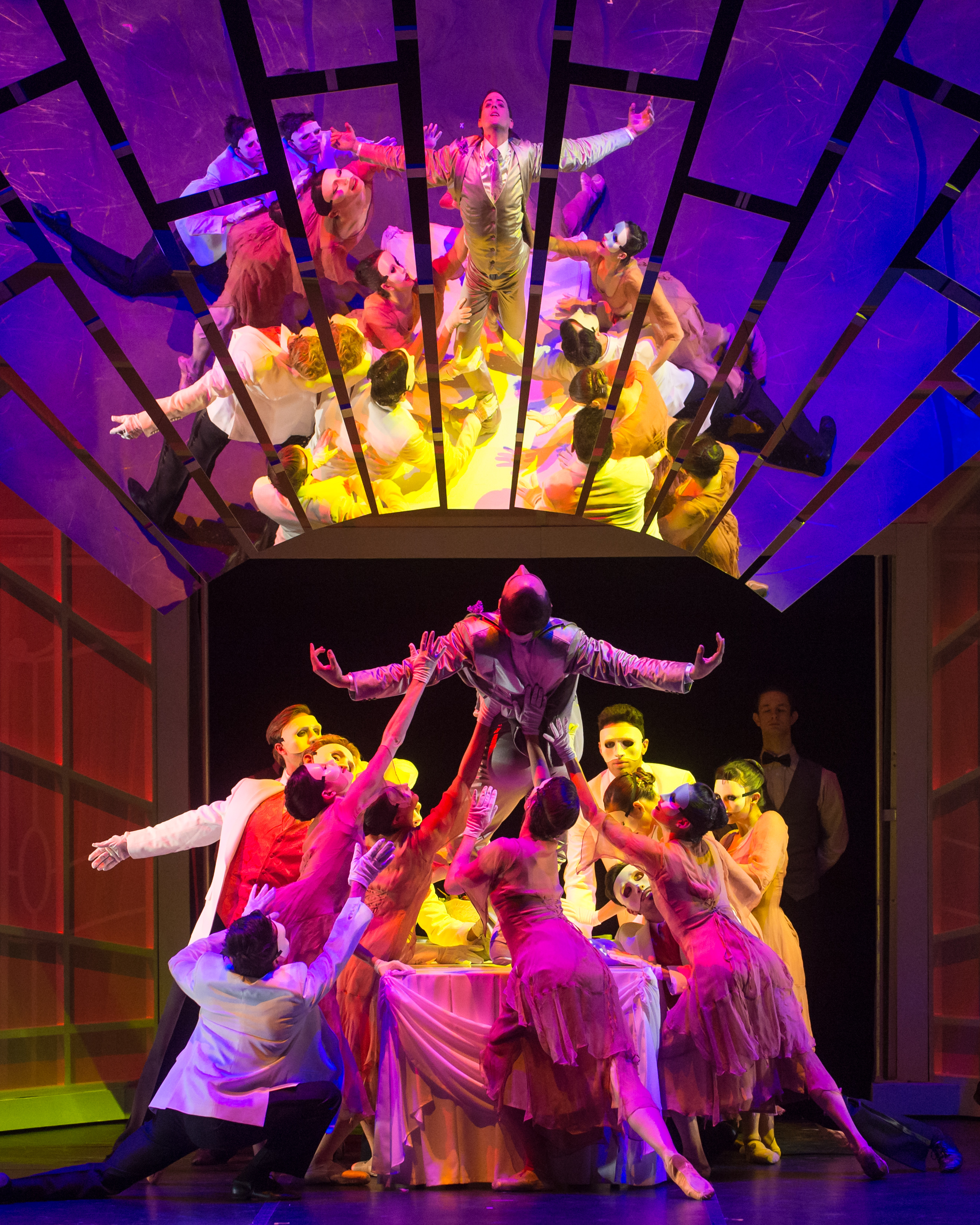MILWAUKEE, WI—Oscar Wilde’s prerogative about art was that it served little purpose but to fill the world with beauty and pleasure, and he lived his life in pursuit of both. In one sense, his novel The Picture of Dorian Gray is a chintzy romance flick that lives up to Wilde’s views, and yet his book remains a topic of discussion in the loftiest of conversational forums more than a century later.
The argument Wilde makes is for a life of extravagance, guided by impulse, pleasure and passion. However, Wilde also seems acutely aware that pleasure is short-lived, and does not come without consequences. With their tragic fates sealed, one might ask the fictional Gray and the very real Oscar Wilde of their hedonistic lives: “So, how’d that work out for you?”
Milwaukee Ballet portrayed the story of Dorian Gray in a new ballet by Artistic Director Michael Pink Feb. 12-21, and the opulence of the Pabst Theater was the ideal setting for the tale of a beautiful man at war with himself. Ballet seems a perfect medium for a story deeply guided by aesthetic beauty, and indeed, every aspect of Pink’s ballet is as beautiful as we imagine Dorian to be.
“Manners are more important than morals,” says actor James Zager, portraying the witty Lord Henry in the ballet’s opening moments. Zager’s speaking role moves the story along – in fact, we might be quite lost without him. Though not exactly a narrator, as the only person onstage who talks (thanks for that), Zager’s interactions with the dancers are quite fascinating, but not at all weird. Purists who know the novel may notice that some of the dialog has shifted to Lord Henry and away from various other characters, but this doesn’t impair the story one bit. Another creative liberty are the ghostly visitations of Sybil Vane, James Vane, and Basil Hallward, as demons taunting Gray until his unfortunate undoing.

Of particular note is the tour de force performance of Patrick Howell as the title character. Not that this ballet is particularly easy for everybody else, but Howell is barely given a moment off-stage, and his commitment to the complex character of Dorian Gray is convincing even from the balcony of the Pabst. Michael Pink plays a clean game in this ballet, steering away from “safe” virtuosity and opting for clear intentionality behind his choices. Oscar Wilde was, at times, a dirty rascal, and Pink is unafraid to “go there,” inserting dirty jokes and raunch a-plenty (in a good way). A master at creating pas de deux, two standout moments are Pink’s first act duet with Howell and Luz San Miguel as Sybil Vane, and Howell’s second act “duet” with his portrait.
Considering the extravagance of the book’s era, I was surprised to find the ballet pared down with a small-ish cast, and relatively simple sets and costumes. Though I found each of the trappings a bit minimalistic, together with David Grill’s dreamy lighting the whole was greater than the sum of its parts. The extravagance of this Dorian Gray is perhaps its length. At a full 2+ hours, it could have easily been a one-act. It felt as if Pink was charged with filling the music, while the score could have been trimmed to fit the dance. The result was a few too many dance sequences that didn’t progress the story, but were pleasant nonetheless.
But maybe that’s the point. After all, art’s only role is to fill the world with beauty and pleasure, right?!?
